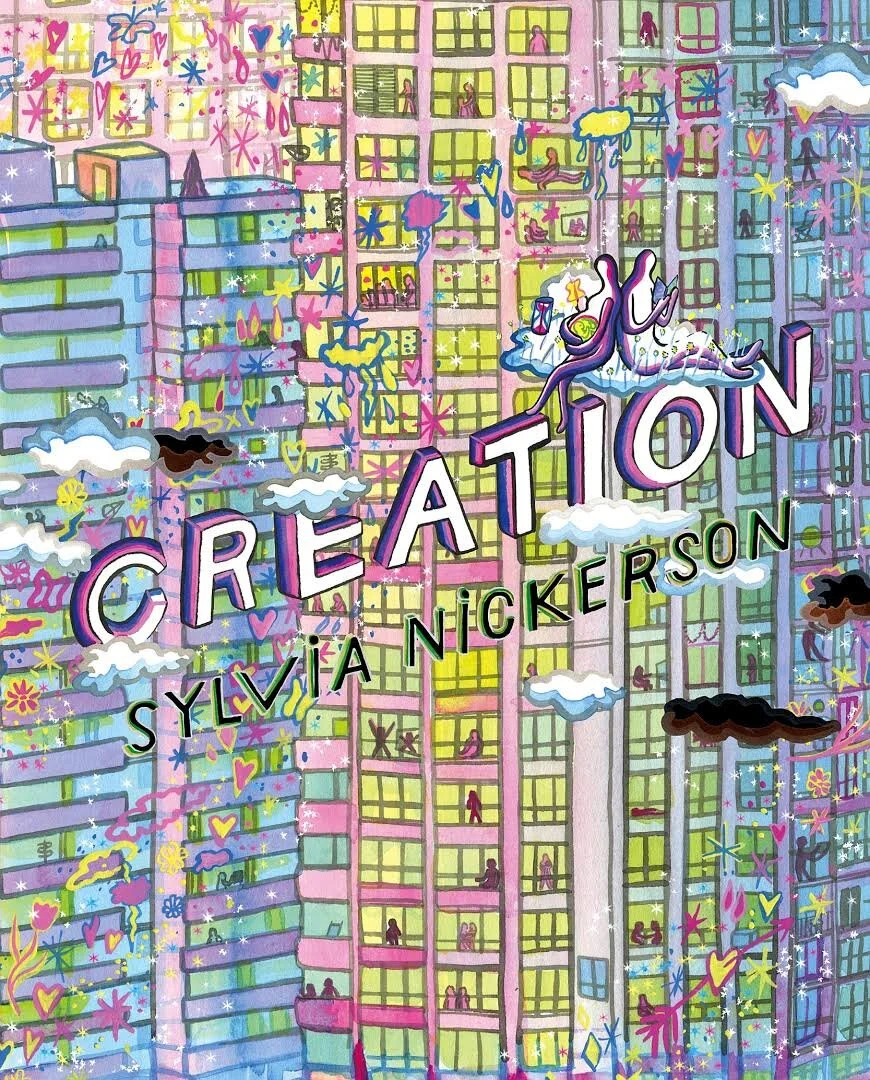Creation by Sylvia Nickerson
Drawn & Quarterly $21.95
Reviewed by Rebecca Fish Ewan
What is a city? How do we know if change in a city is good or bad, healthy or not? How can we know where we belong in the life of a city? When we become mothers, what does this do to our lives, to how we fit in a city, as artists, as women, as mothers?
So many questions.
Sylvia Nickerson’s book Creation navigates the conflicts and confusion of what it means to be human in a city, specifically in gritty Hamilton, Canada, sister city to Flint, Michigan.
Her drawings, a mix of pen and watercolor, all grayscale, predominantly faceless people, city street scenes and skylines, create an amazingly moving and sad symphony of urban life that is at once intimate and remote. Like how living in a city feels. Like how being human feels.
My favorite page from the book reads like comics poetry. Nickerson writes, “I used to know things. Things I learned from books. Things I read in school. Now what I know are our bodies, and these streets.” Her words lilt between scenes of streets, a fountain in a park. Reading Creation felt like floating on a calm ocean, that power beneath you, undulating your body, the bright blue sky above. Alone in the quiet of it, feeling like a speck of nothing, yet connected to the enormity of the sea. Maybe the day will drift by while you float. Maybe a shark will eat you. There’s a mix of distracting concern about death and the pure joy of being alive.
The themes that float through the book center around gentrification. The shifting from working class neighborhood to artist enclave. There is a parallel sense of the gentrification of the self through motherhood, the pushing aside of art to make room for the responsibilities of child rearing. This social/personal treatment for gentrification is also used to reveal issues of social injustice, pollution and health.
So much of Creation is about the contrast of opposites, and Nickerson includes a litany of them to describe Hamilton as “green and industrial, gritty and natural, rich and poor”— at least the Hamilton she knew when she first moved there. The use of black and white, the structure of the chapters separated by interludes, brief comics nearly muted of words, amplify the resonance of opposites. How so much of the human condition is feeling pulled apart by our own opposing thoughts. Can I be a mother and an artist? Am I part of the city’s problem or part of its solution? Am I living or dying?
Woven into the main body of the book are drawings of clouds that spell out words. “I’m sorry,” in particular, repeats like a refrain. In the end, I’m not sure what the apology is for. Being human, perhaps. Added into the mix of words and images, the clouds and the city they hover over create such a powerful sensorial experience. In the end, I love this book, not because it answers all the questions, but because it asks them and leaves them there on the page for me to explore.
Rebecca Fish Ewan is a poet/cartoonist/founder of Plankton Press. Her work appears in After the Art, Brevity, Crab Fat, Hip Mama, Mutha, Not Very Quiet, TNB, Punctuate, and Under the Gum Tree. She holds an MFA in creative writing from Arizona State University, where she teaches landscape design with a focus on urban walking, landscape history and place-based hybrid storytelling. She is the Books with Pictures columnist for DIY MFA and the author of A Land Between, By the Forces of Gravity, and Water Marks.

